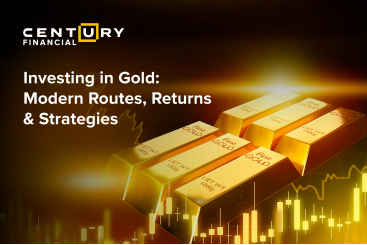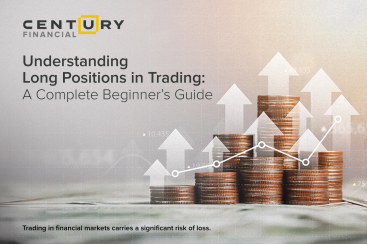Thursday, June 26, 2025
U.S. Joins Israel-Iran War, Sending Shockwaves Through Global Markets
By Century Financial in 'Blog'
__1418016979.jpg)
.jpg)
The Trigger: Operation Midnight Hammer
In a dramatic turn, U.S. B-2 stealth bombers attacked three Iranian nuclear facilities— Fordo, Natanz, and Isfahan—on June 22, deploying 30,000-pound "bunker buster" bombs (GBU-57 Massive Ordnance Penetrators) in Operation Midnight Hammer. The Pentagon confirmed "extremely severe damage" to the facilities, although satellite imagery indicates Iran had possibly moved enriched uranium before time. President Trump declared Iran's nuclear capabilities "obliterated," while Iran vowed "everlasting consequences," including possible strikes on U.S. bases and regional shipping lanes.
Immediate Market Reaction
(as of June 23)
Oil Markets: The Strait of Hormuz Sword of Damocles
.png)
Supply Shock Looms
Oil jumped by 10.1% since hostilities began on June 13, but the real risk lies in Iran’s threat to block the Strait of Hormuz—a path for 21 million barrels of daily oil transport (21% of global supply). If executed, analysts warn Brent could spike to $100+/barrel. U.S. Secretary of State, Marco Rubio suggested closure "economic suicide" for Iran, but fallback procedures are likely being triggered.
.png)
U.S. Resilience vs. Global Vulnerability
Unlike past oil shocks, the U.S. is now the world’s top oil producer (20% of global supply), thanks to fracking, (a method used to extract oil and natural gas from deep underground rocks). Higher prices may shift profits to U.S. energy companies rather than breaking the economy. However, Europe and Asia face severe risks due to dependence on Hormuz-shipped oil 29.
Historical Oil Price Shocks & Market Impact
| Event | Oil Spike |
S&P 500 (3 Weeks Later) |
|---|---|---|
| Iraq Invades Kuwait (1990) | +100% | -3.3% |
| Saudi Drone Strike (2019) | +20% | -1.1% |
| Israel-Iran War (2025) | +18% (so far) | -0.3% (initial) |
Source: Forbes, Reuters
Inflation & Central Banks: A Double-Barreled Threat
.png)
The U.S. Federal Reserve (the Fed) left rates unchanged on June 18, forecasting two 2025 cuts to support the economy, despite rising inflation risks. Chair Powell acknowledged Trump’s tariffs could lift prices, while Middle East oil spikes might be "short-term issue”. However, potential $100+ oil could:
Delay rate cuts, means high oil prices, this means inflation remains high
Strain consumers, especially low-income households as energy consumption is 20% of their budgets
.png)
ECB/Bank of England: European countries import most of their oil and gas. If global oil prices stay high, their inflation will rise, hence these banks may delay making cuts.
Bank of Japan: Goldman Sachs expects no hike until 2026, but Yen is weakening fast, which would make imports more expensive, the government might step up to support the currency.
Sector Winners & Losers
Energy Stocks Shine
Energy stocks have gone up 2% since June 13, while S&P 500 has dropped by 1.2% Warren Buffett’s Berkshire Hathaway holds 27% of Occidental Petroleum (OXY) and large shares of Chevron (CVX) stakes—that’s 3 times more than energy sector’s average share in the S&P 500, meaning Buffet is much more bullish on energy stocks than the average investor.
Vulnerable Sectors:
Transportation:
Airlines are exposed to jet fuel price spikes
Consumer Discretionary:
Retail sales already fell sharply on May 3. When fuel prices rise, people often cut back on non-essential shopping like clothes, furniture, electronics, etc.
Tech:
Companies like Micron rely on global shipping routes. If Iran-backed Houthis rebels attack ships at the Red Sea, supply chains could be disrupted, delaying production and hurting revenue.
Relative Performance Since Conflict Began
(June 13-23)
.png)
Currency Wars & Safe Havens
Dollar Resurgence
The USD increased 1% since June 13 as investors turned towards safety. The rise in dollar could reverse its earlier 8% decline in 2025. However, the U.S. government has a huge debt (over 130% of its GDP). This makes some investors worry about how much higher the dollar can go from here.
.png)
.png)
Gold’s Paradoxical Dip:
Normally in times of conflict, gold prices go up. But, gold has dropped 0.2%. A strong dollar makes gold even more expensive for non-US buyers. However, central banks are still buying gold which may keep its price from falling too far.
Crypto’s Neutral Stance:
Bitcoin held at $101,000. During crisis, investors often get nervous and avoid risky assets, but crypto is not collapsing. In fact, Tether has issued $22 Billion in 2025, showing strong demand for digital dollars.
.png)
Four Escalation Scenarios & Market Implications
Dollar Resurgence
(40% Probability):
Oil stabilizes near $80 per barrel; nothing too extreme
Stock Markets bounce back (especially around July-Sept)
The U.S. Feds cuts interest rates in September, as planned
Hormuz Blockade
(30% Probability):
Oil spikes over $100 per barrel – fuel, transportation, production costs rise, global recession risk increases
S&P 500 drops 10-15%; energy stocks surge 20%.
S&P 500 drops 10-15%; energy stocks surge 20%.
U.S. Military bases in Middle East are hit
(20% Probability):
Defence stocks (Lockheed, Raytheon) go up, owing to more demand for weapons
Investors look for safety, they buy U.S. government bonds
Bonds yields fall (which usually helps over investments)
Nuclear Contamination
(10% Probability):
Agricultural futures surge, food supply fears
European stocks crash as people panic-sell
Gold jumps to more than $3,500/oz as people flee to the ultimate safe heaven
Source: Analyst consensus from Reuters, Bloomberg 6912
Strategic Recommendations
Portfolio Hedges
Overweight U.S. energy stocks like Occidental Petroleum and Chevron (OXY, CVX) as they make money when oil prices rise. Additionally, defence contractors’ profit during military tensions.
Hold gold and USD cash positions as they are stable and strong during global uncertainty
Avoid U.S. energy stocks like Occidental Petroleum and Chevron (OXY, CVX) as they make money when oil prices rise. Additionally, defence contractors’ profit during military tensions.
Watch These Catalysts:
Iran’s Next Retaliation If Iran takes time to retaliate, it could be a sign of diplomatic peace talks which could calm markets
U.S. Inflation Report June PCE (this Friday): If core inflation is below 2.6%, the U.S. Feds might go ahead with cutting interest rates
Houthi Red Sea Attacks If any oil tankers are attacked, oil prices could spike quickly.
The Bottom Line
While markets initially reacted calmly to Operation Midnight Hammer, complacency is dangerous. The conflict’s trajectory hinges on Iran’s response—and a Hormuz closure would rewrite the global economic playbook. Historically, markets absorb geopolitical shocks within months (e.g., 1990 Gulf War). Yet today’s fragile backdrop—tariffs, election uncertainty, and stretched valuations—amplifies risks.
As FedEx CEO Raj Subramaniam noted: "Global trade is a chameleon—it adapts but never forgets disruption." Investors must prioritize resilience: energy exposure, quality defensives, and agile risk management.
Sources: Reuters 910, Forbes 2, AP 5, Washington Post 4, Fed Transcripts 3, Bloomberg 6, IAEA Reports 812.
The content in this blog, including any research, analysis, opinions, forecasts, or other information (collectively, "Information"), is provided by Century Financial Consultancy LLC (CFC) for marketing, educational, and general informational purposes only. It should not be construed as investment advice, a recommendation, or a solicitation to buy or sell any financial instruments.
This Information may also be published across various channels, including CFC’s website, third-party platforms, newsletters, marketing materials, emails, social media, messaging apps, webinars, and other communications. While CFC strives for accuracy, we do not guarantee the completeness, reliability, or timeliness of any content. Any decisions made based on this Information are at your own risk. CFC accepts no liability for any loss or damage arising from its use.
Trading financial products involves significant risk and may not be suitable for all investors. Please ensure you fully understand the risks and seek independent professional advice if necessary.
Please refer to the full risk disclosure mentioned on our website.









.png)
.png)
.png)
.png)


